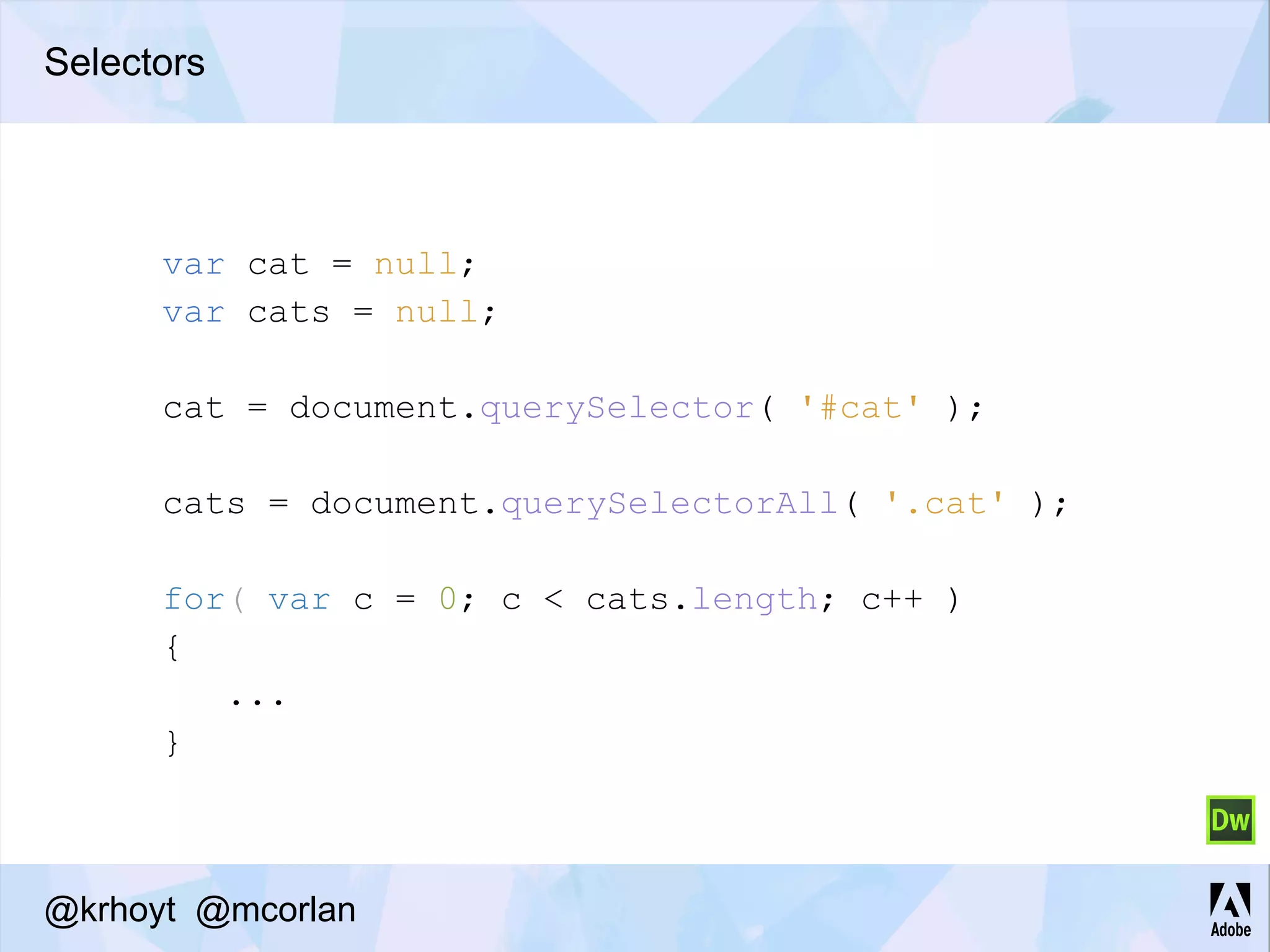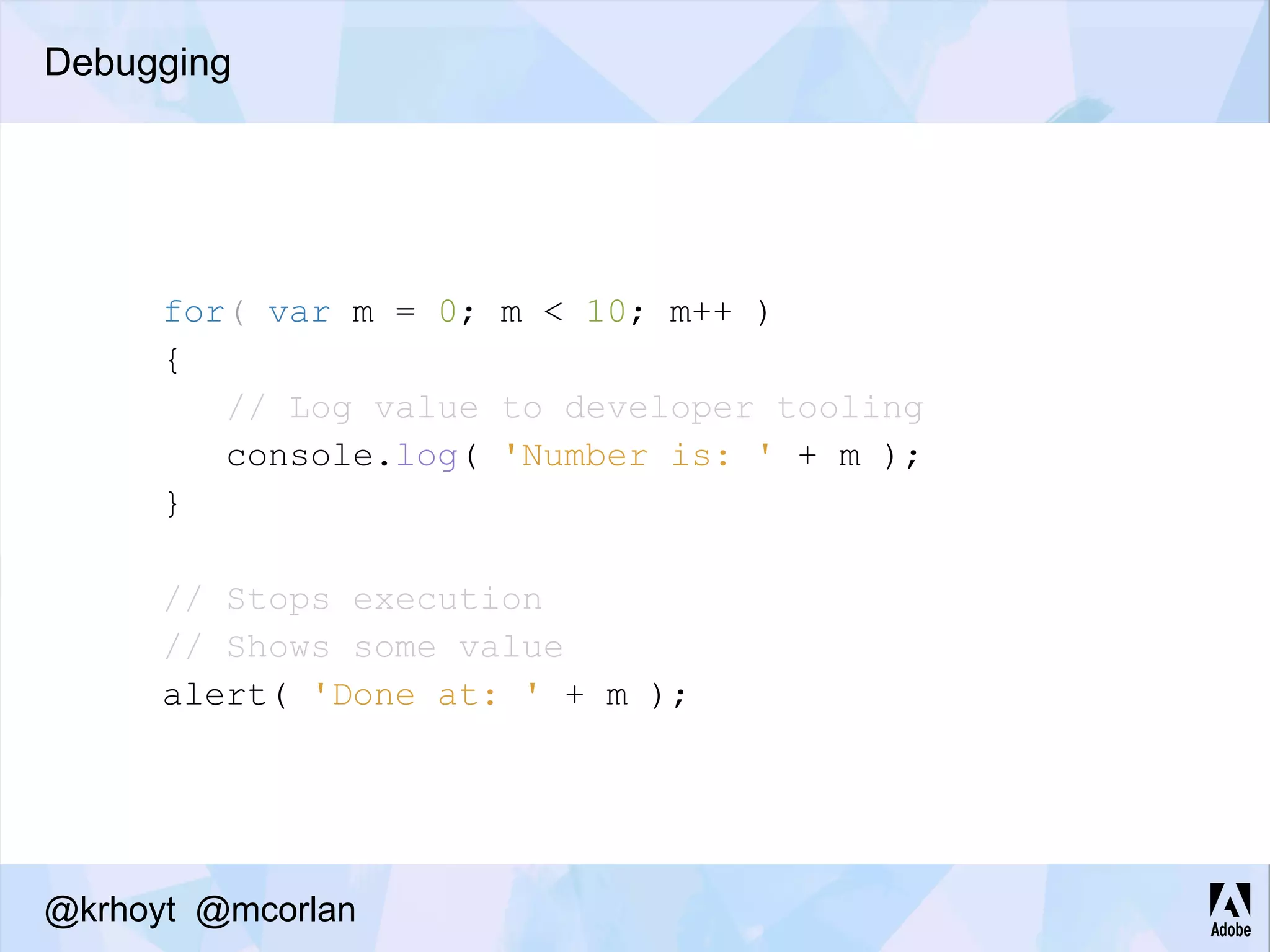The document serves as an introduction to JavaScript, covering its core characteristics, including being a prototype-based, dynamic, and weakly typed scripting language. It explains essential concepts such as variables, data types, control structures, functions, event handling, and debugging techniques. Additionally, it highlights how to incorporate JavaScript into HTML pages and provides examples for practical understanding.


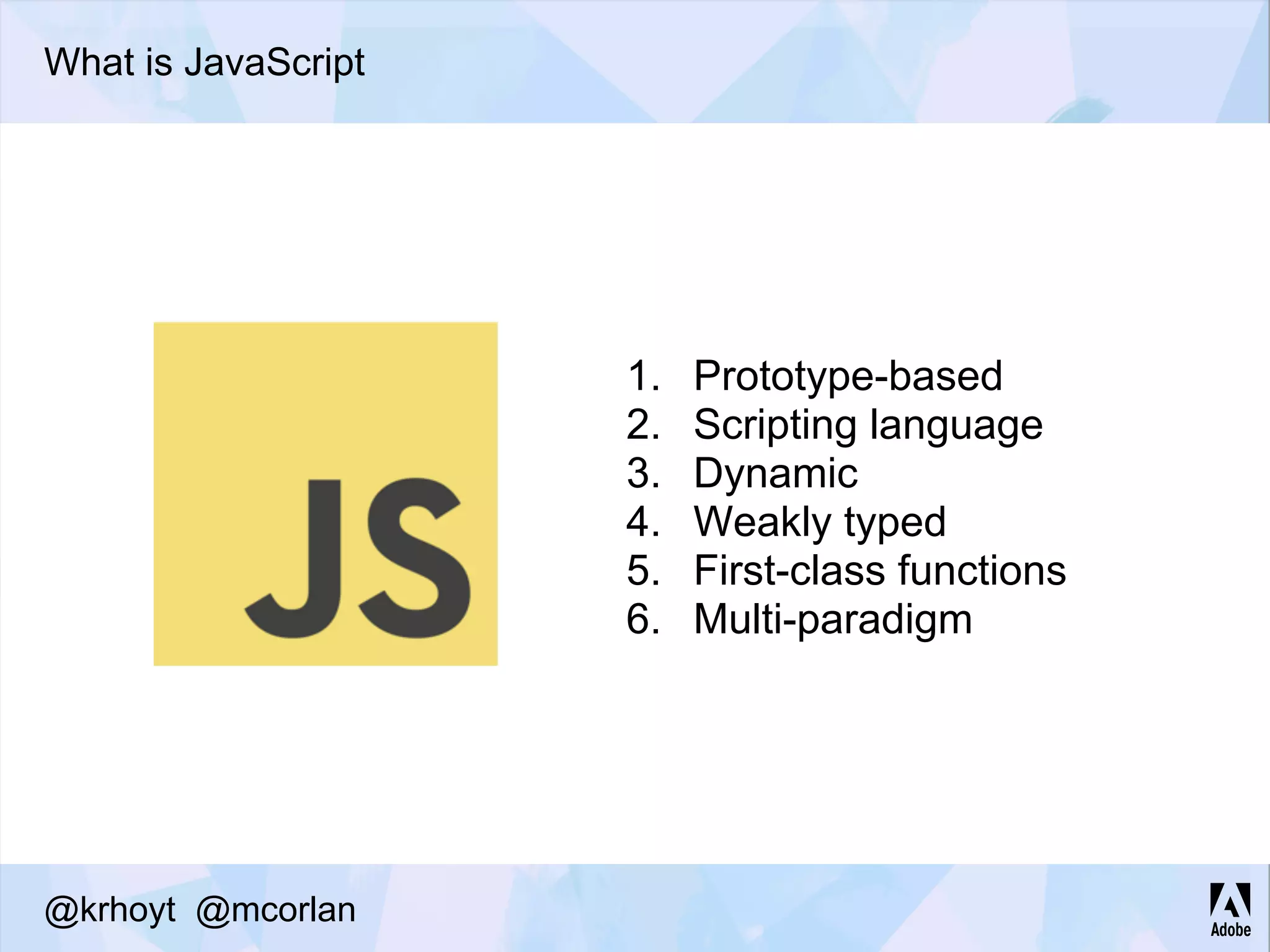
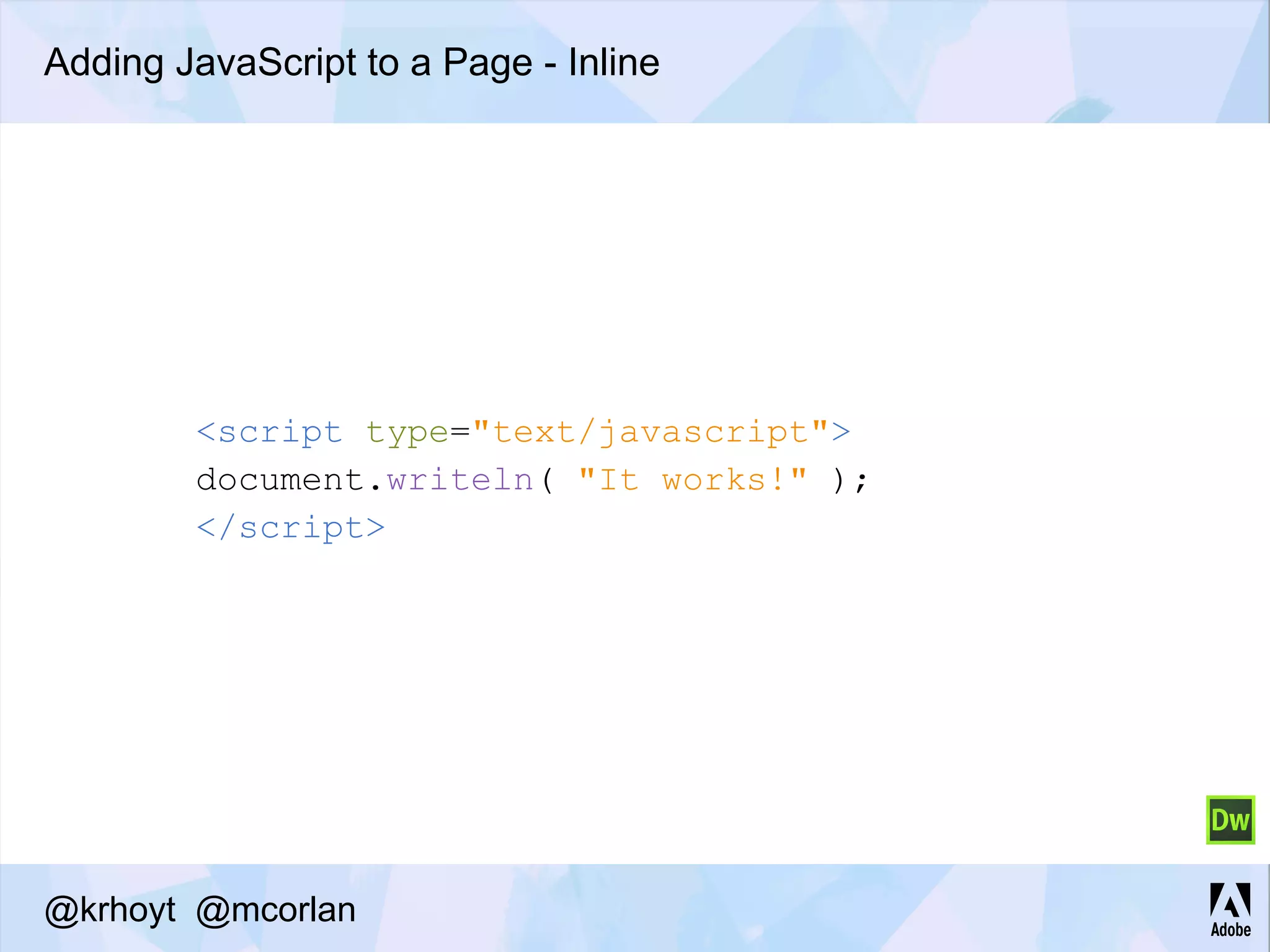

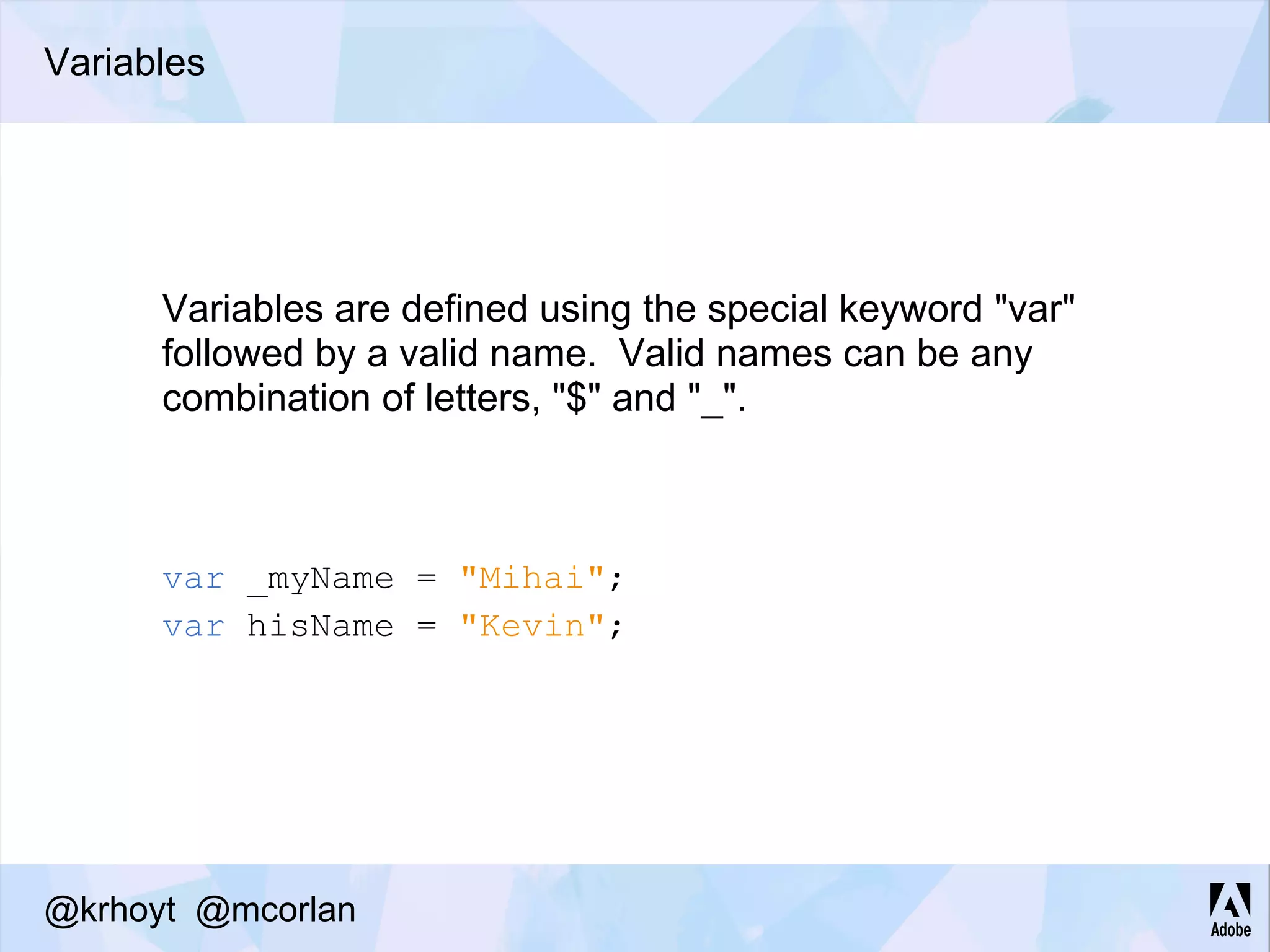
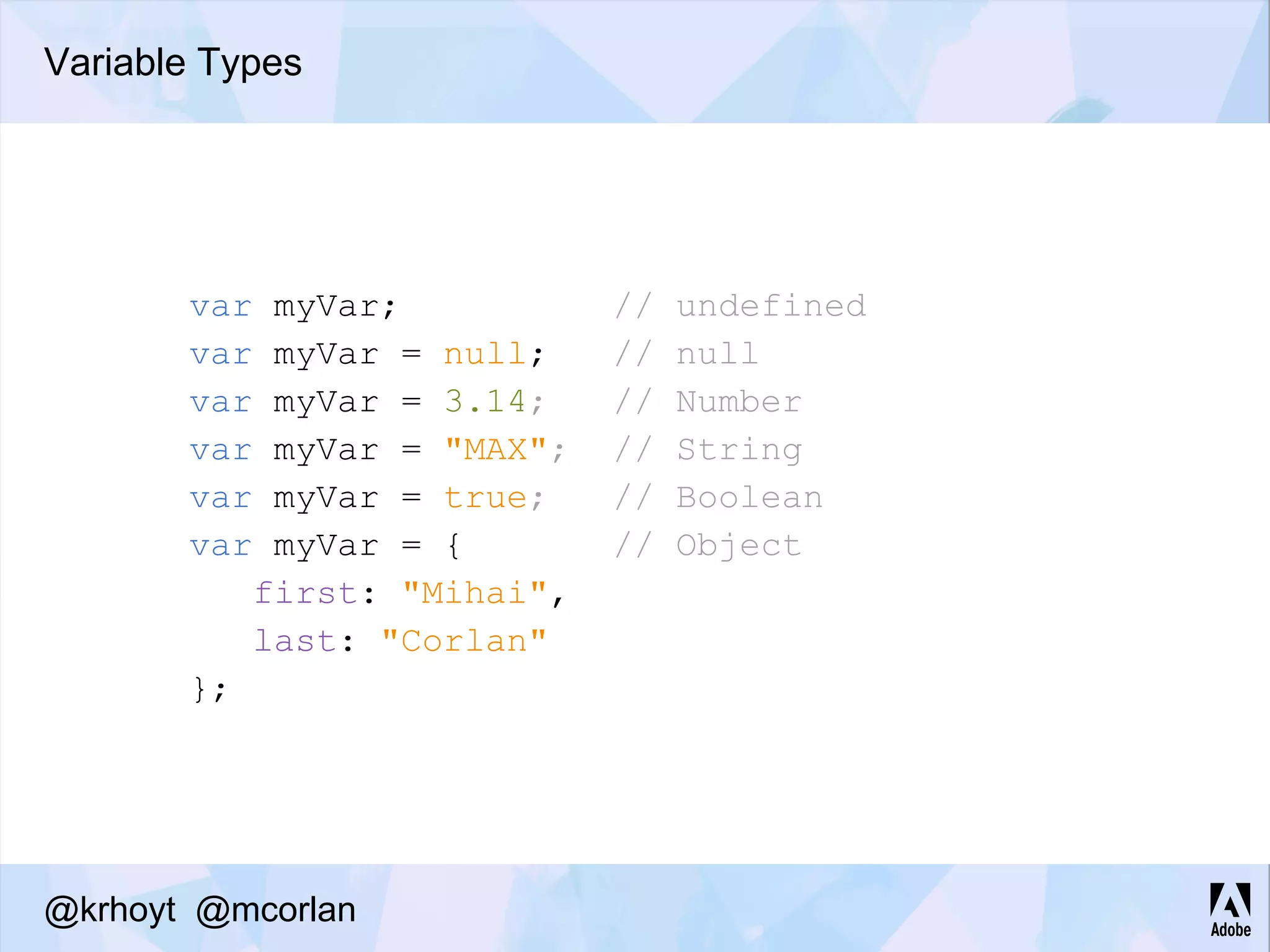
![Arrays var simpleArray = [1, 2, 3, 4]; var complexArray = new Array(); complexArray.push( 1 ); complexArray.push( "Kevin" ); An array is an ordered list of variables. Values inside the array can be of any type. You can even mix the types for each value. @krhoyt @mcorlan](https://image.slidesharecdn.com/gettingstartedwithjavascript-130415141844-phpapp02/75/Getting-Started-with-JavaScript-8-2048.jpg)
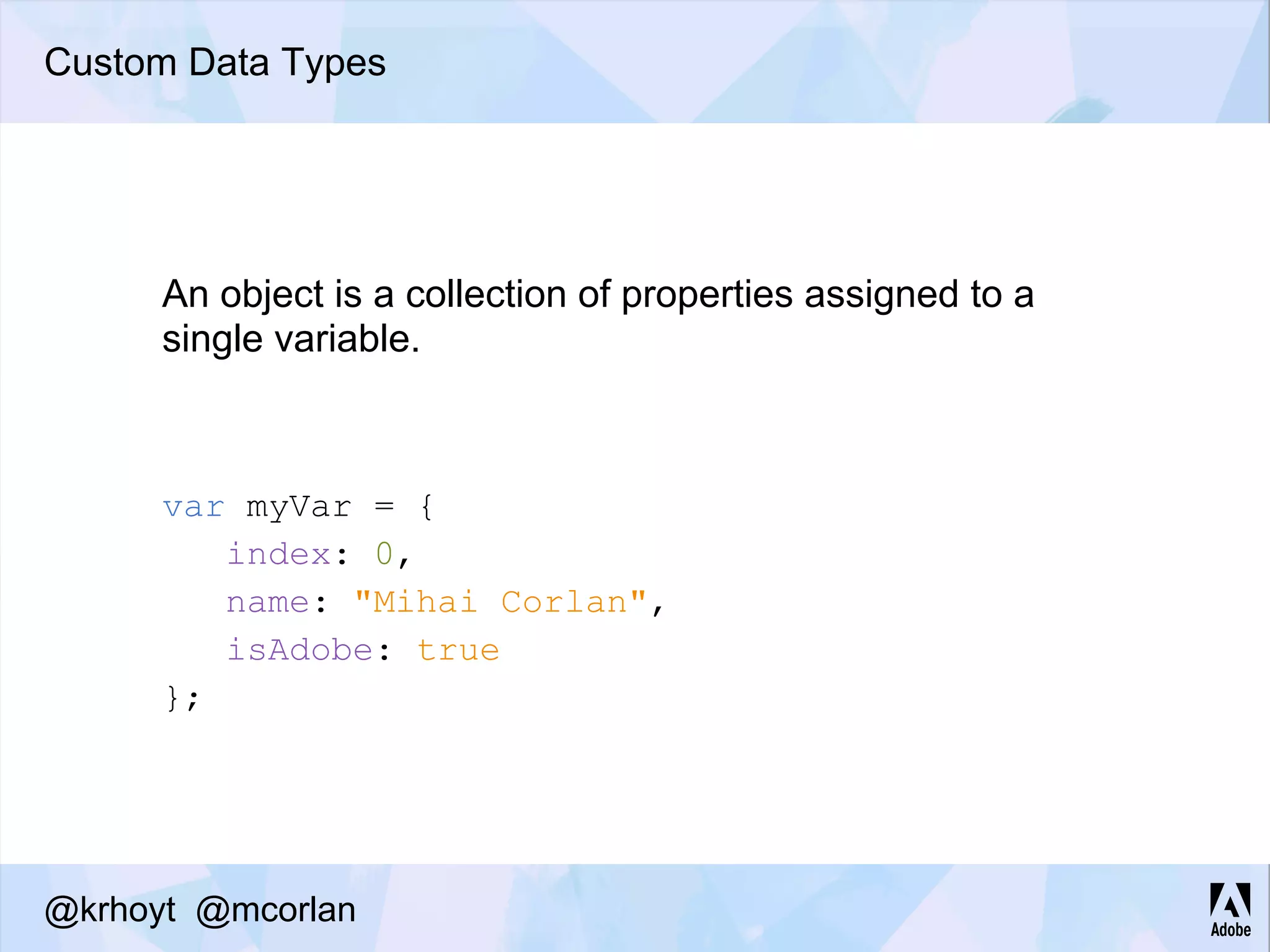
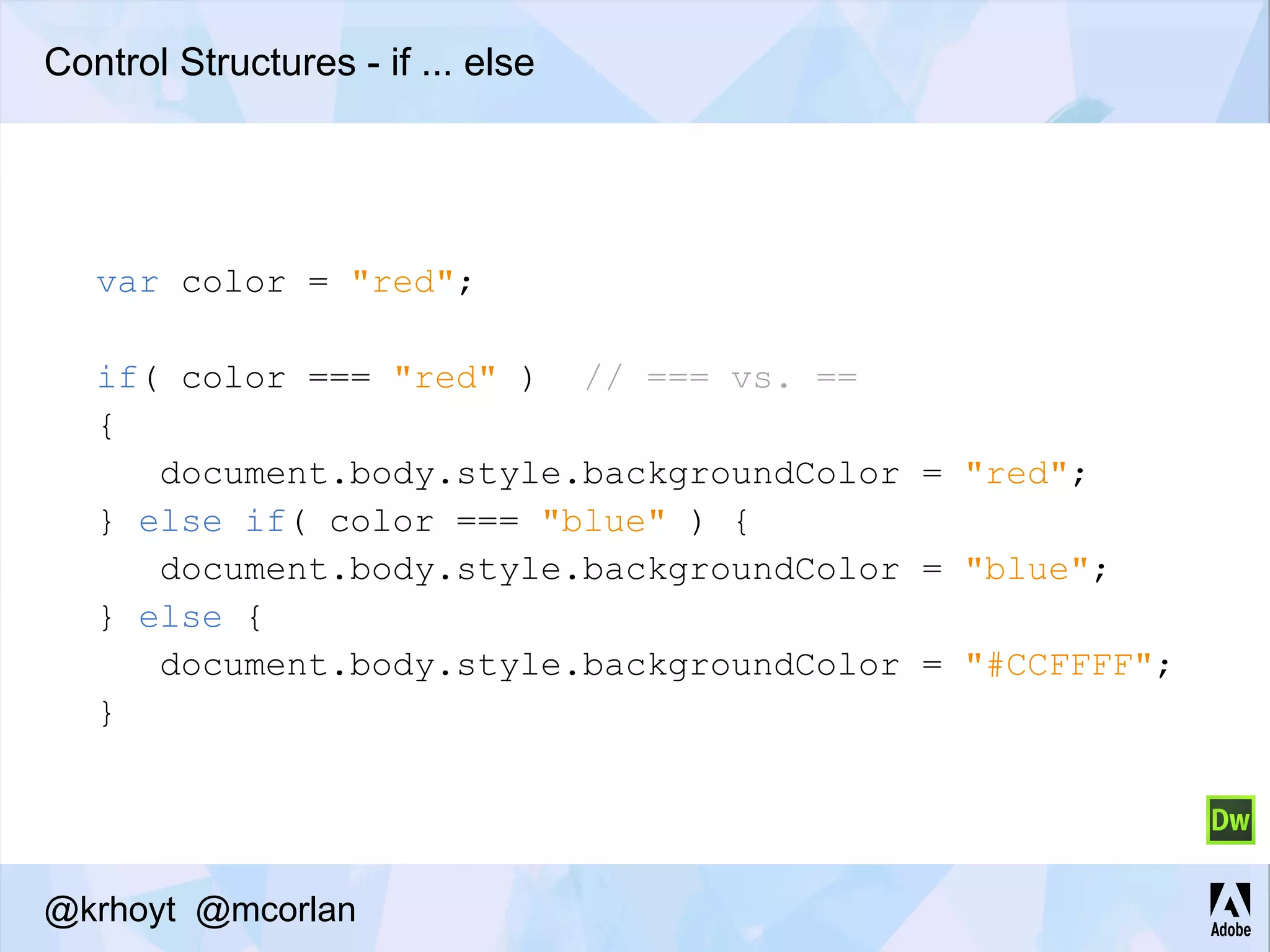

![Control Structures - for var div; var numbers = [1, 2, 3, 4, 5, 6]; for( var n = 0; n < numbers.length; n++ ) { div = document.createElement( "div" ); div.innerHTML = numbers[n]; div.style.fontSize = numbers[n] + "em"; document.body.appendChild( div ); } @krhoyt @mcorlan](https://image.slidesharecdn.com/gettingstartedwithjavascript-130415141844-phpapp02/75/Getting-Started-with-JavaScript-12-2048.jpg)

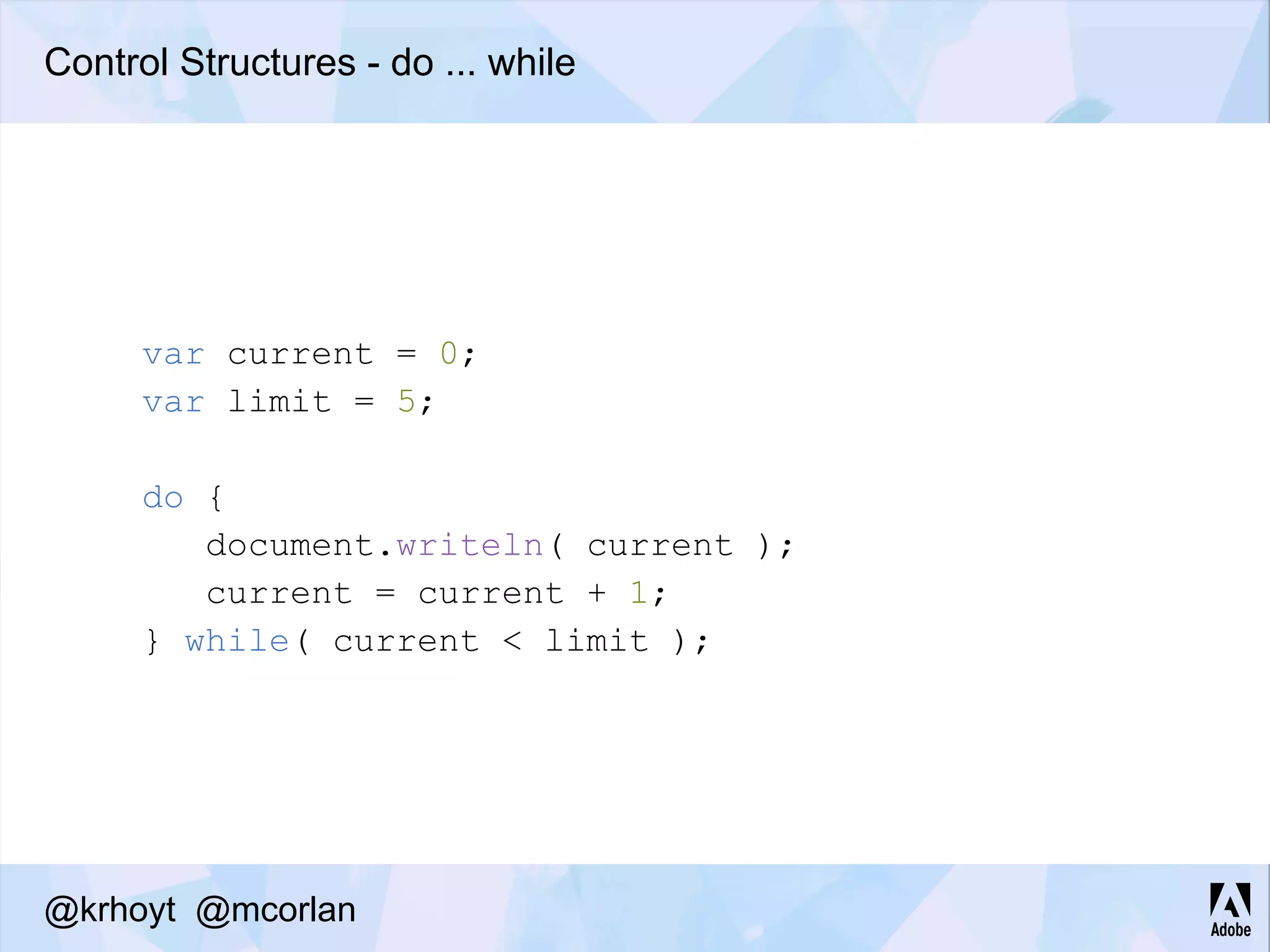

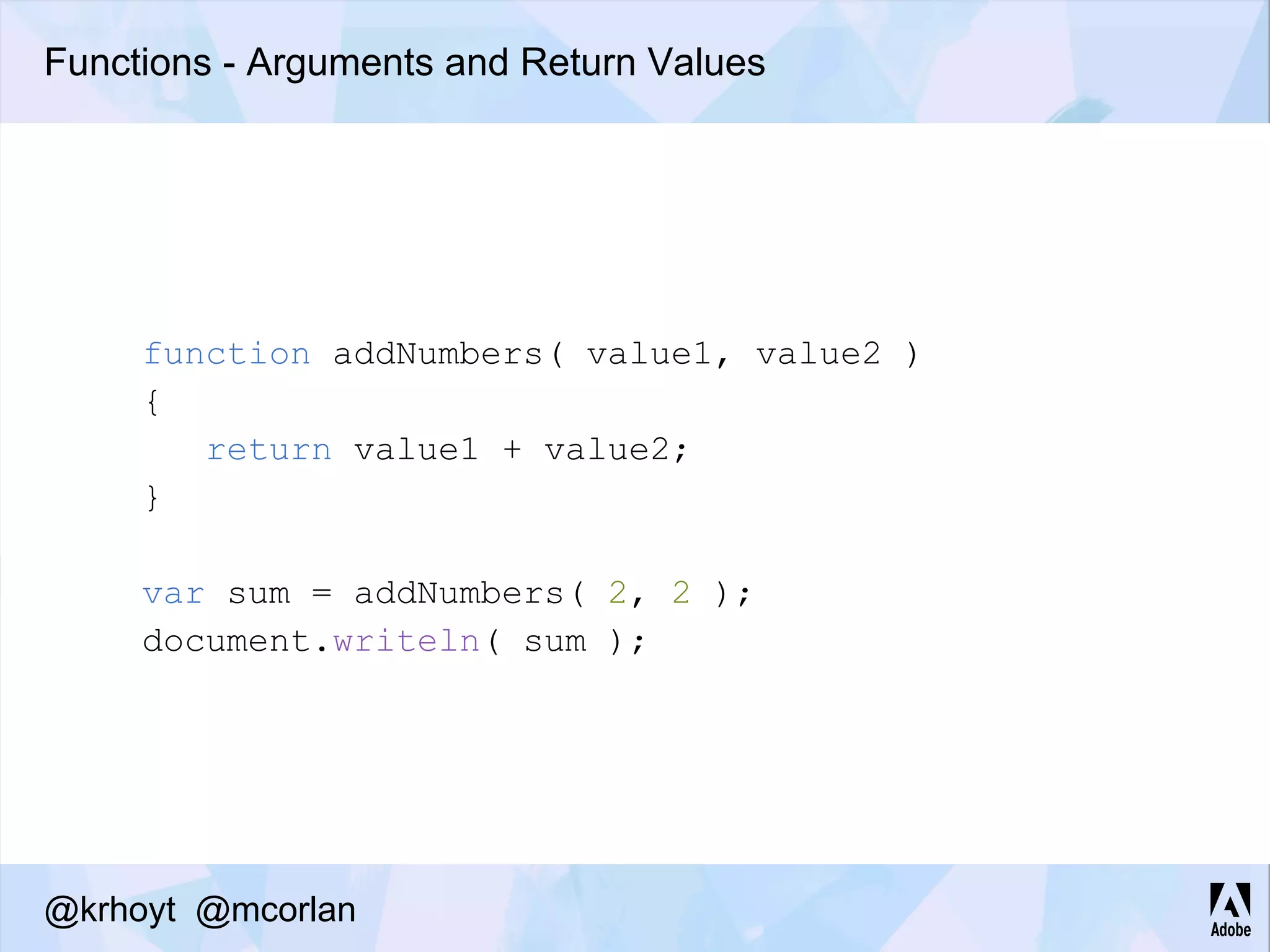
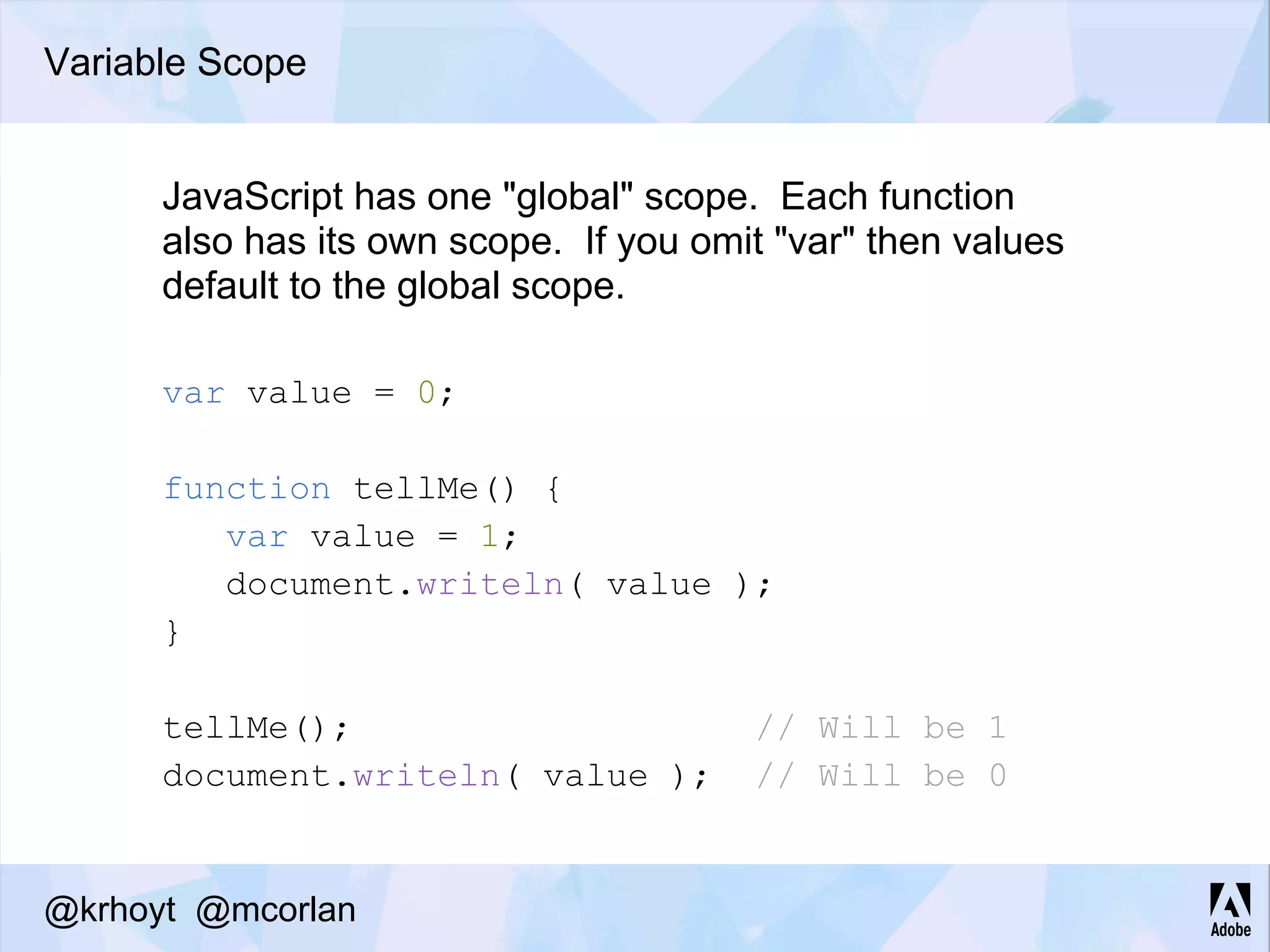
![Handling Events document.images[0].addEventListener( "click", function() { alert( "I was clicked!" ); } ); document.addEventListener( "mousemove", doMouseMove ); Events are signals generated when specific actions occur. JavaScript is aware of these signals and can run scripts in reaction to them. @krhoyt @mcorlan](https://image.slidesharecdn.com/gettingstartedwithjavascript-130415141844-phpapp02/75/Getting-Started-with-JavaScript-18-2048.jpg)
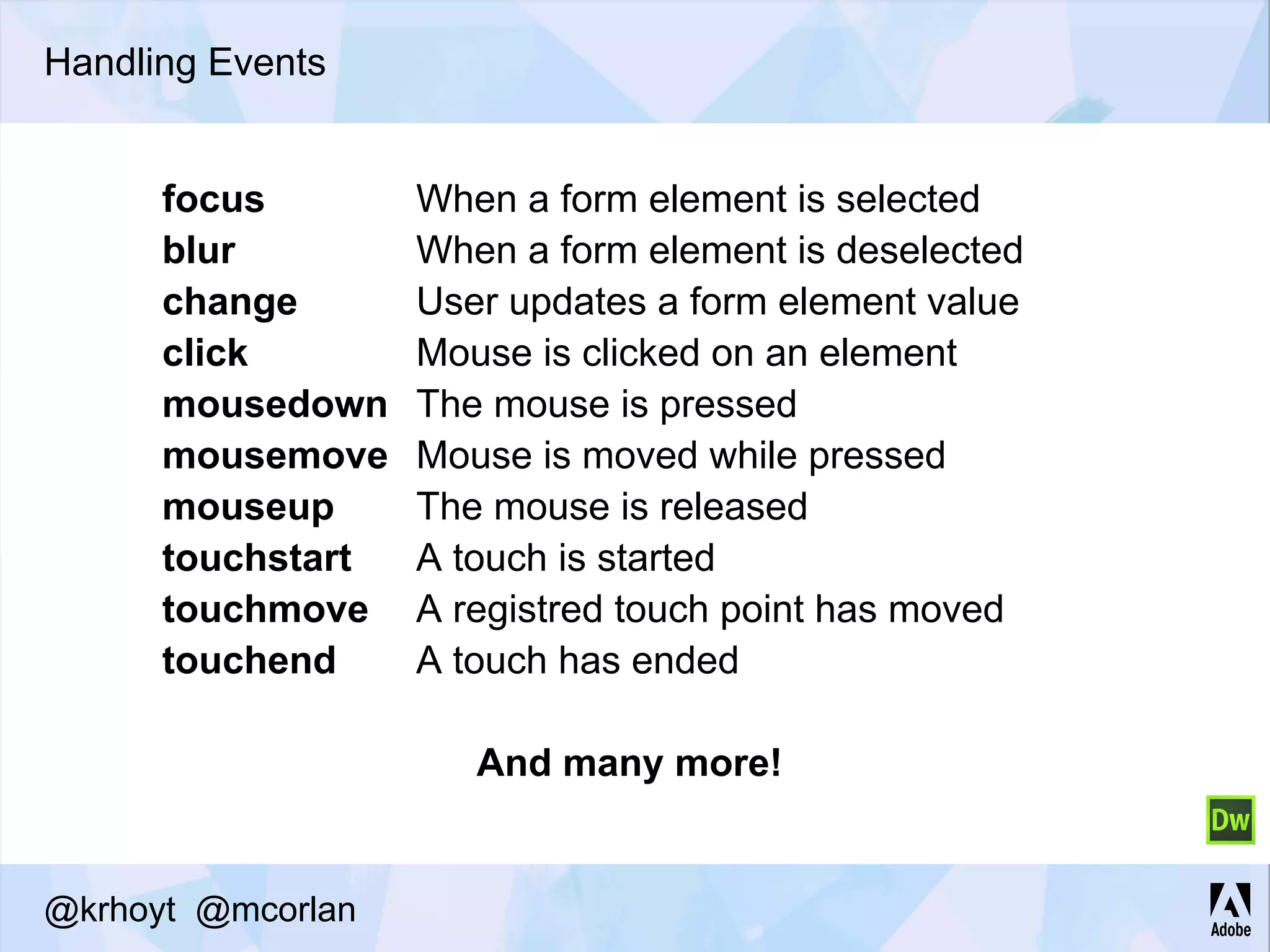
![Selectors Type: IMG, DIV, INPUT Attribute: INPUT[type="text"] Class: .green, INPUT.green ID: #username, #password Psuedo: DIV > p:first-child @krhoyt @mcorlan](https://image.slidesharecdn.com/gettingstartedwithjavascript-130415141844-phpapp02/75/Getting-Started-with-JavaScript-20-2048.jpg)
